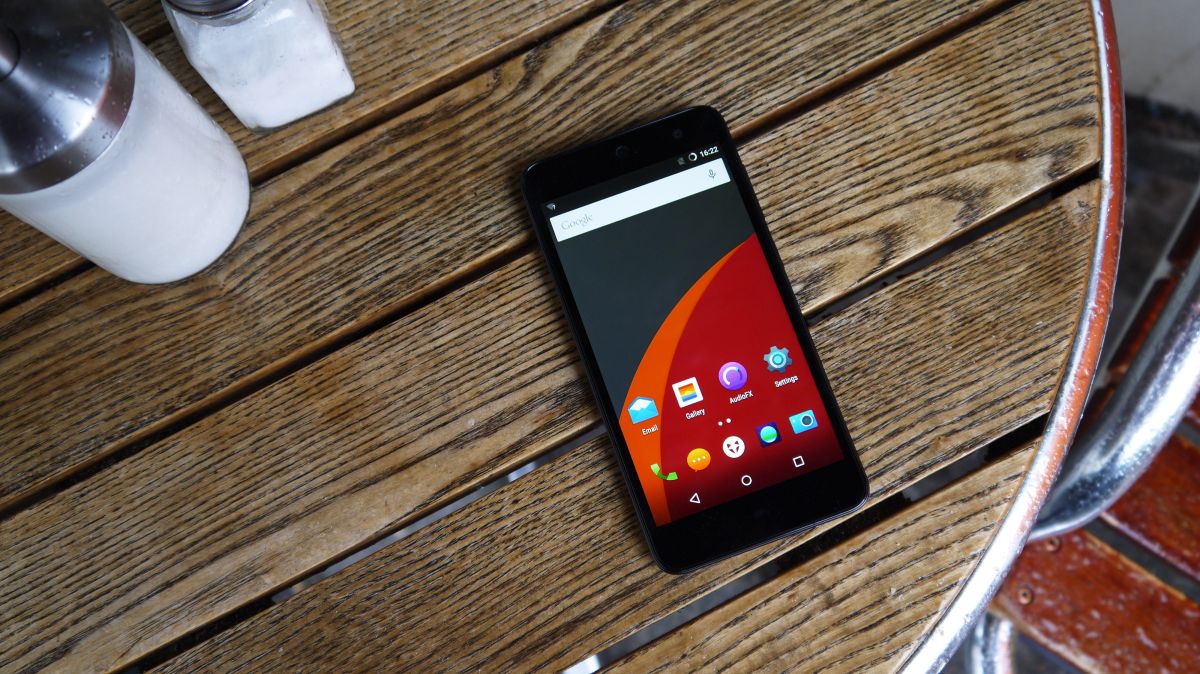
Introduction and features
When Google debuted its Nexus programme in 2010 the public and press were pleasantly surprised. Nexus devices offered what were, at the time, excellent specs at a less than premium price point, and Nexus phones have enjoyed considerable success.
In the intervening years, however, others have caught up with and surpassed Google in offering a capable smartphone package for less cash. The OnePlus One and Moto G, among others, have made the running, encouraging more and more manufacturers to dip their toes.
That now includes Wileyfox. A British startup headed by the former European boss of Motorola, the firm intends to disrupt the low-to-mid-end space with two well-specced offerings, the Swift and the Storm. And with the two devices costing £129 and £199 respectively, they’re definitely priced to move.
But, as the likes of Motorola continue to consolidate their gains in this space, and with Huawei, among others, offering increasingly competitive packages at ever-lower price points, is there room for another player to join the game?
Design
It’s no longer acceptable in 2015 to produce an ugly smartphone, no matter the cost. As with many other features that were once exclusive to the premium tier of smartphones, such as the Samsung Galaxy S6 or iPhone 6 Plus, good design is now expected to be found across the board.
The Wileyfox Swift is neither beautiful or ugly. It’s the same as all other devices of its ilk – a glass slab with a rear covered in textured plastic. With its (relatively) small 5-inch screen and weight of just 135g it’s a comfortable device to use.
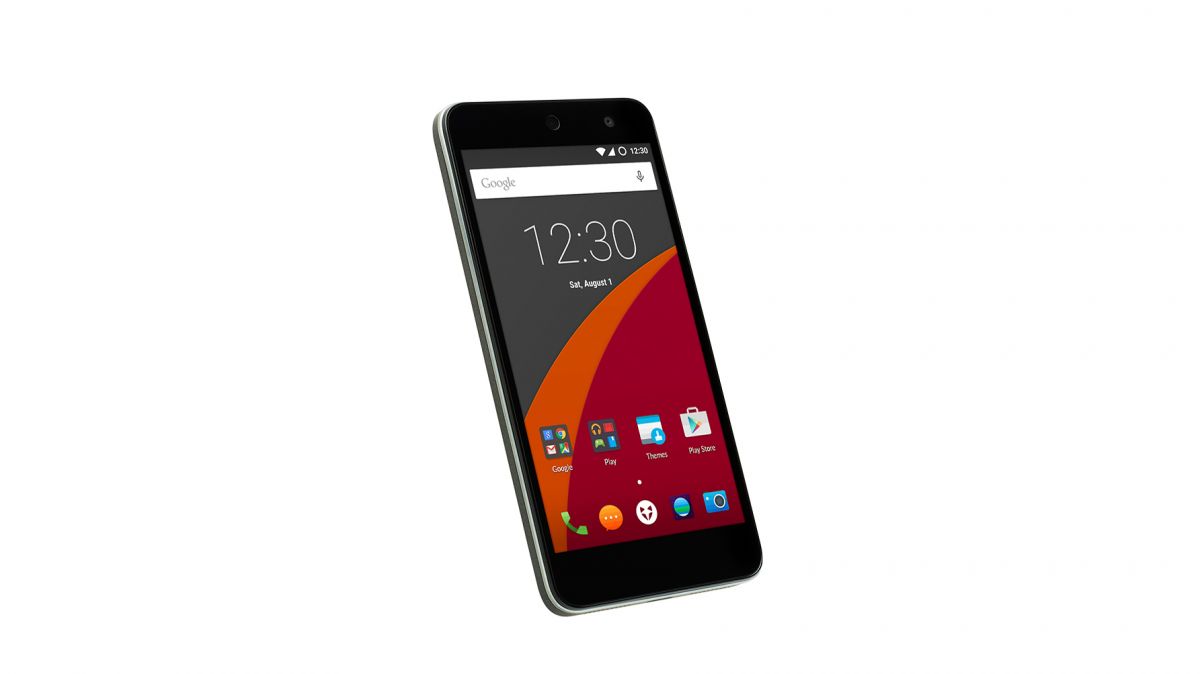
Adopting the same line taken by Motorola, Wileyfox has added curves in palm-friendly places, and the back is a nice grippy matte plastic. The more I used the Swift, the more I liked it.
The buttons on the Wileyfox Swift are laid out in a pattern that’s become the norm for many smartphones. On the right-hand side of the device are the volume rocker and the power button, both of which feel slightly mushy.
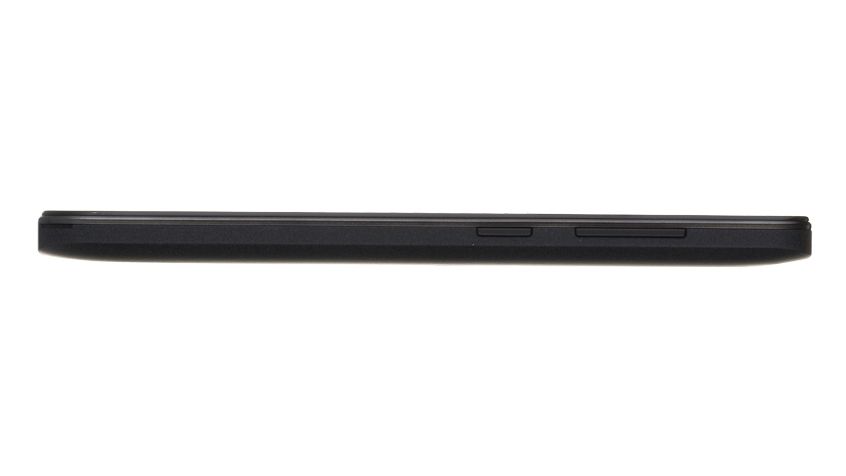
On the bottom there’s a micro USB port for charging and connecting to a PC via the provided tangle-free cable. The bottom is also home to dual speaker grilles, of which only the right-hand one actually contains a driver. At the top is the 3.5mm headphone jack.
The rear of the device is home to the ‘style’ elements of the design: a subtle, burnished WileyFox insignia; a small sunken Wileyfox logo; and a 13MP camera ringed with bronze-effect plastic, along with the dual LED flash.
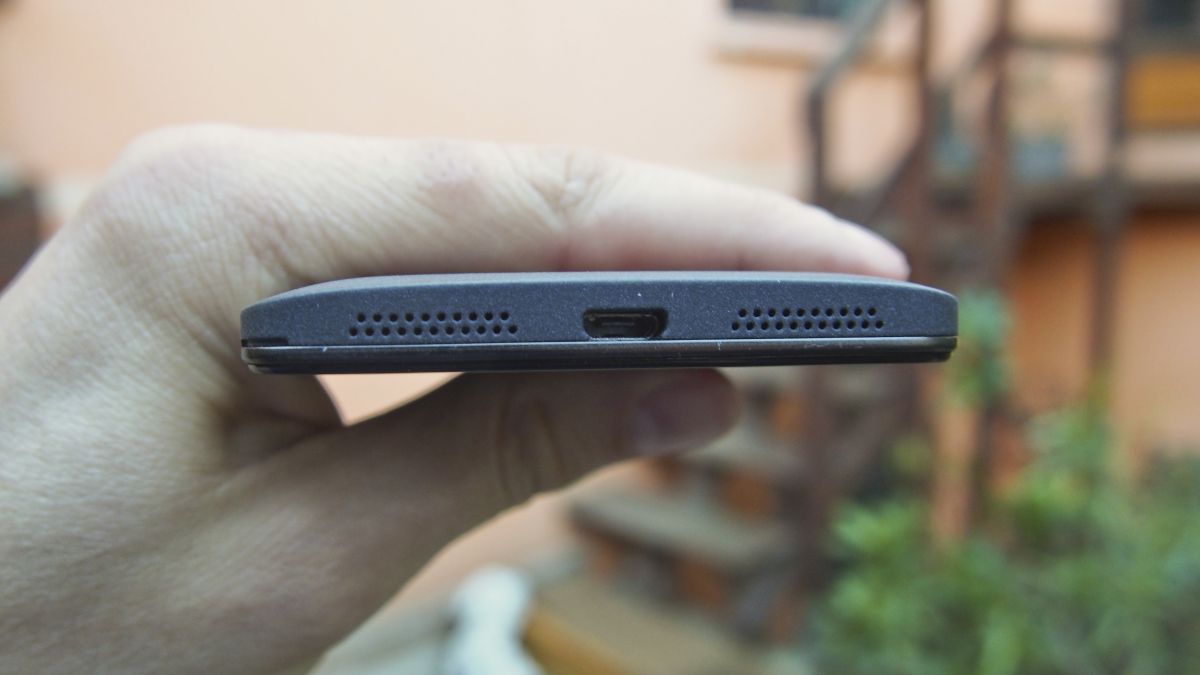
Above the 5-inch 720p screen are the call speaker and the 5MP selfie cam.
All in all, the Swift makes a middling first impression. Lacking the immediate visual flair of a phone like the HTC One M9, ‘premium’ was almost certainly not a word that figured in the design brief.
Screen
A smartphone lives and dies by its display – and the panel on the Wileyfox Swift is rather nice. The screen is protected by a sheet of Gorilla Glass 3, making it more resistant to breaking and scratching than the average screen.
More importantly, it means the screen has an oleophobic coating, which isn’t something that can be said of every device in this price bracket. This makes day to day use of the device a pleasantly tactile experience, and is good news for fans of gesture typing.
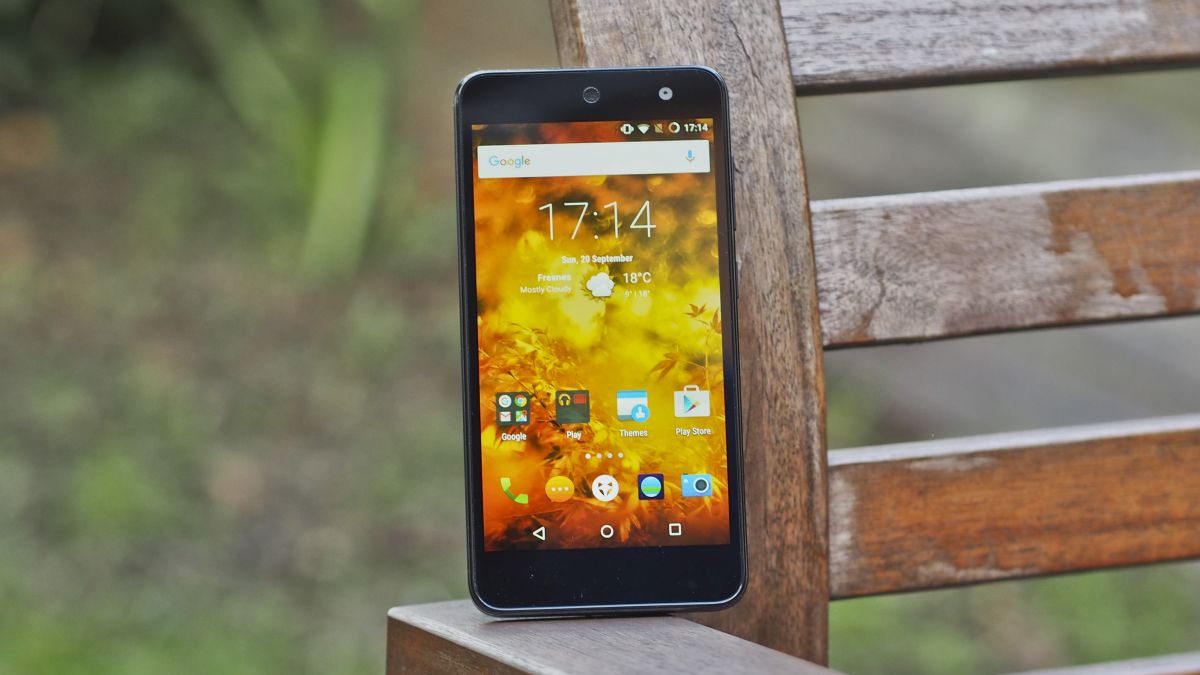
With a resolution of 720p, and at five inches across, the Swift has a pixel density of 294ppi. Though this doesn’t quite get into Retina territory, in everyday use the screen is excellent.
Whether as a result of text smoothing or other fancy software tricks, reading on the device is as easy, and as pleasurable, as watching media, which is high praise indeed.
As it’s an IPS panel, viewing angles are excellent, as is colour accuracy. The Swift runs Cyanogen (of which more in a moment), so the colour temperature of the panel, and other settings, can be tweaked.
The brightness and contrast of the LCD display can lack the ‘pop’ of an AMOLED panel, but the display on the Swift is perfectly adequate in both regards.
It’s pretty hard to find a ‘bad’ smartphone display these days, even at the budget end of the market; even so, the Swift’s screen does it credit.
Cyanogen, speakers and sound
Released in 2007, the iPhone was the first popular ‘smart’ phone to hit the market. In 2008 it was followed by the T-Mobile G1, the first Android device.
Since then, Symbian, Windows Phone, Blackberry OS, MeeGo, Firefox OS, WebOS, Sailfish OS and Ubuntu for Phones have been born, lived and died or hung on. Two players have endured and thrived – iOS and Android – while the rest have fought over scraps.

Cyanogen is a little different. It was born as an Android ROM, and its makers have acquired significant backing from venture capitalists, as well as a number of larger companies. Now the ROM is an independent OS, a fully-fledged fork of stock Android that has appeared on high-profile handsets such as the Oppo N1 and OnePlus One.
And what an OS it is. Cyanogen is Android in its purest form, and what that means is you get lots of control. Don’t like the colour temperature of your screen? You can change it. Don’t like the colour of your notification light? You can change it to almost any colour that exists. Want to increase your screen DPI? Bro, there’s a setting for that.
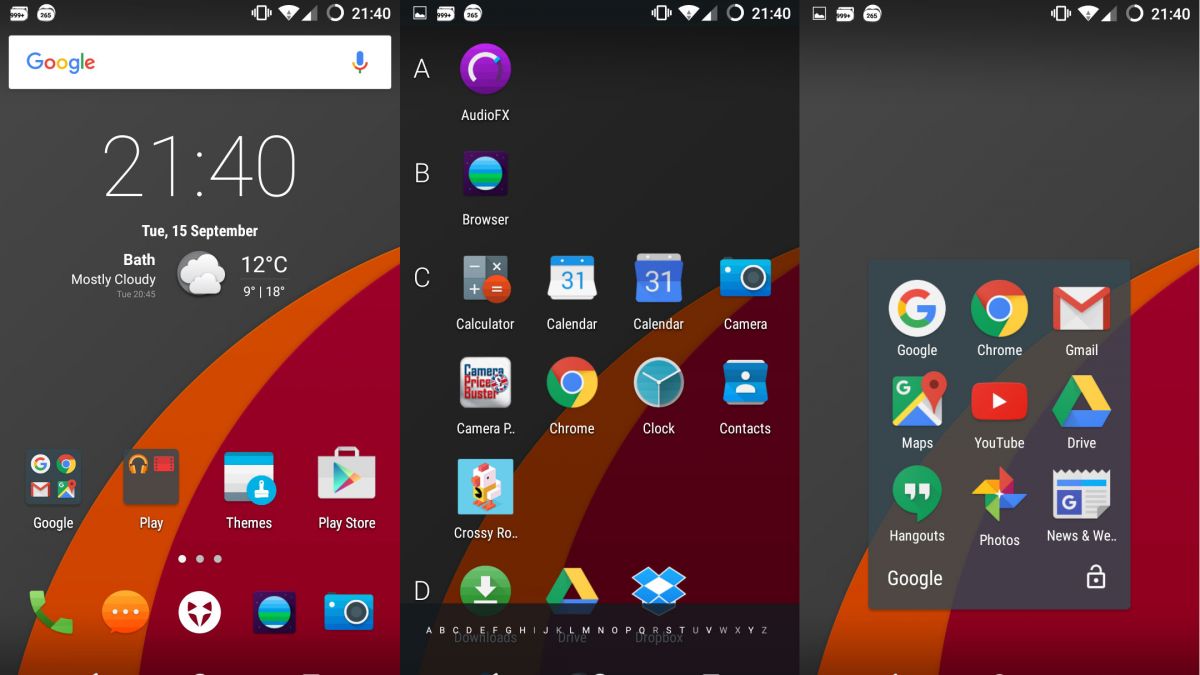
Google, being what it is, straddles a fine line between control and user freedom. If it keeps its OS on too tight a leash, the handset manufacturers will flee; if it gives users too much freedom, and the 90% or so who would rather not be overwhelmed with customisation options will be put off.
Stock Android and the Google Now launcher are something of a solution, and yet Cyanogen is more elegant.
On the Wileyfox Swift, the OS runs very smoothly. The Snapdragon 410 keeps everything chugging along nicely, again proving its chops as one of the best budget chips available at the moment.
In general usage, the only difference that the average Joe will notice is in settings menu. It’s sensibly laid out, and a search setting makes it easy to navigate – which is just as well given that the number of options available has skyrocketed.
From the insignificant to the system-wide, it’s possible to achieve many different ends from this one menu. The customization options never become overwhelming, although it is easy to activate settings without being too sure what they do.

I personally managed to make the alarm almost impossible to de-activate which, coupled with my preferred birdcall alarm, caused more than one morning to take on sinisterly Hitchcockian overtones.
Cyanogen is a means by which Wileyfox has sought to distinguish itself from the Android flock, and this has its own dangers. In the past, Cyanogen has proven that it can have fractious relations with partners such as OnePlus, to the detriment of consumers.
Whether this will affect Wileyfox is something that only time will tell us; however it’s definitely something to think about if you’re considering this phone.
Pick your theme
The theme store is now a large part of the Cyanogen experience. With one press it’s possible for the user to change the entire visual experience on their device in a coherent manner. Themes come in a variety of different forms, both free and paid-for.
Most take the same form as those found in the theme stores used by the likes of Samsung with the Galaxy S6, LG with the G4 and HTC with the One M9. That is to say that they tend to be reasonably well thought out, and come in flavours to match many tastes, whether that be for an infestation of Minions, or a replica of LG’s Android skin.
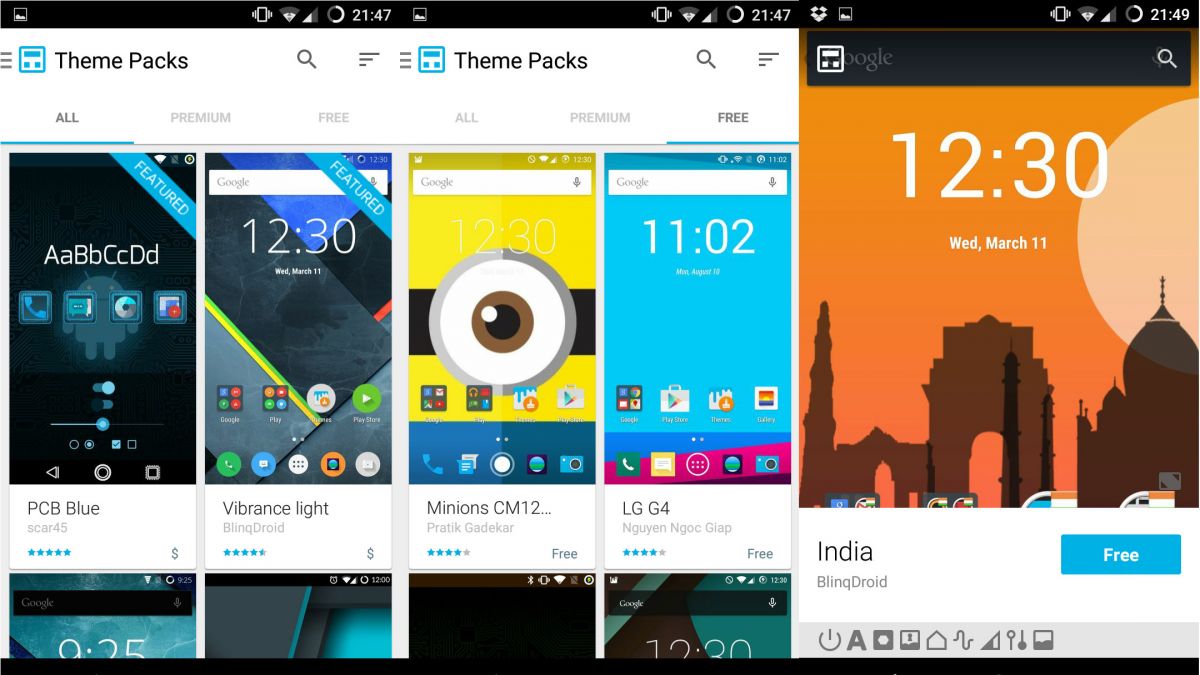
Themes can be changed on a whim; I personally took quite a shine to the ‘India’ theme.
For users who don’t wish to effect a system-wide aesthetic change, the option to simply alter the home screen wallpaper still remains, as do the rest of the Android visual bells and whistles, so everyone’s catered for.
At the time of writing, however, the selection of themes on the Wileyfox Swift isn’t the biggest, what is there tends to lack variety. While this will likely improve over time, it still limits what might otherwise have been a very compelling feature.
Speakers and sound
In addition to high-quality displays, several other features that were once the preserve of flagship devices have begun to trickle down to more modestly priced phones. A better than average camera and decent performance can now be expected from almost any device priced at over £100. And yet one frontier remains: sound.
No matter the manufacturer, phone designers still seem to be of the opinion that front-firing speakers are a passing madness, and that bottom-firing efforts are little better. Wileyfox begs to differ.

Unlike most phones of a similar price, the WileyFox Swift has a bottom-firing speaker. And, coupled with the powerful built-in EQ mixer, it proves to be quite impressive.
Even at high volumes the speaker retains a respectable clarity in the treble, and the bass still packs something of a punch, if not quite scaling the heights reached by the likes of the HTC One M9.
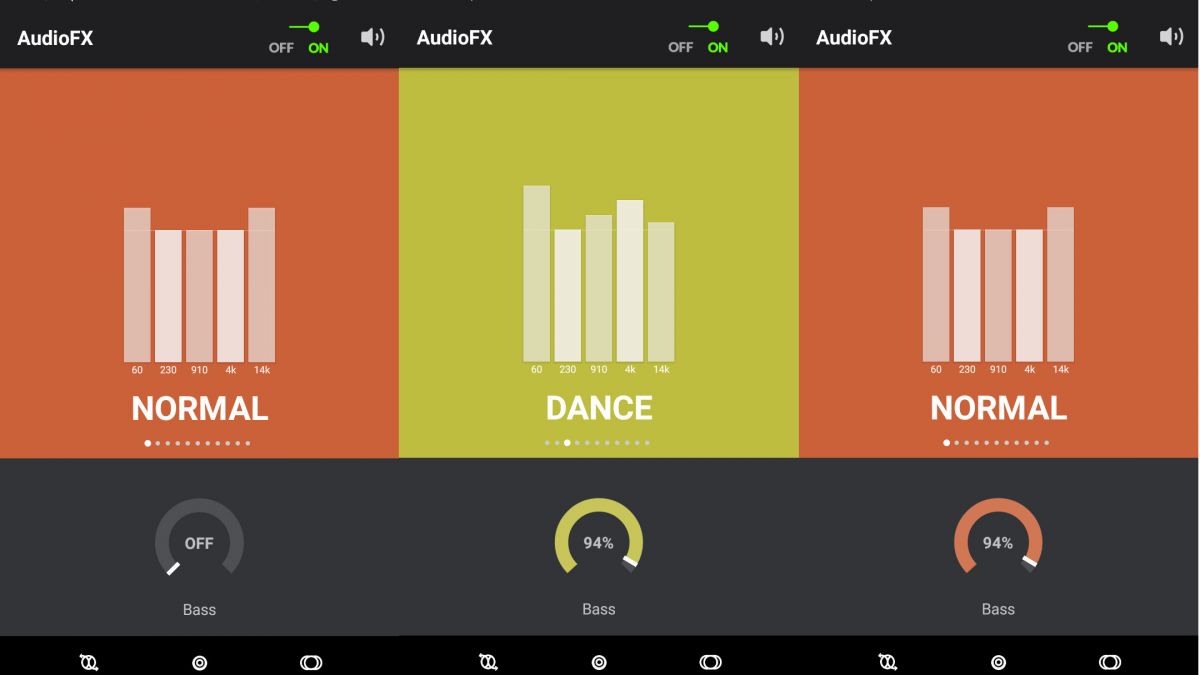
As for wired audio, things just get better. With a strong, punchy output, it’s very easy to rock out with the Swift when using a pair of decent earphones. And thanks to that mixer, even the most discerning audiophile with their £1,000 headphones can expect better-than-average performance.
That Joe (and Jane) Public likes to sing along to Madonna in the bathroom of a morning is increasingly beginning to dawn on the producers on budget handsets, and the Wileyfox Swift is one device that delivers.
Performance and camera
Qualcomm has had something of a difficult year. The chipset manufacturer of choice for many Android manufacturers has been dogged by problems.
First, the overheating issues experienced in systems running the infamous Snapdragon 810 became apparent. Then it turned out that Samsung, one of Qualcomm’s biggest customers, had opted for its own products for the Samsung Galaxy S6 and Galaxy S6 Edge+.
That’s at the upper end of the market though, and fortunately for Qualcomm things are going swimmingly at the budget level. Spurred on by the 64-bit 410 and 610/15, manufacturers have turned out a slew of devices that outperform their price points, and the Wileyfox Swift is among them.

The Snapdragon 410-powered Swift simply flew in everyday performance. Perhaps aided by the resource-efficient Cyanogen OS, navigating between different menus and folders was a breeze.
It also performed superbly when running games. Titles such as Crossy Road, Pac-Man 256, Temple Run 2 and even Crazy Taxi Classic ran well, with rarely a dropped frame.
And with 16GB of internal storage – another welcome feature at this price point, and expandable via microSD – installing all these titles didn’t pose any difficulty.

The results on GeekBench 3 mostly back up my experience. The Swift achieved a single-core score of 436, and a multi-core score of 1330, in both cases matching the three-year-old Samsung Galaxy S3.
Coupled with the performance enhancements brought in by Android, and Cyanogen, since then, the Swift will likely satisfy the average user, even if the most demanding power-hounds may want to look elsewhere.
With 2GB of RAM, running multiple applications side by side was a breeze. It should really be commonplace for £100-plus devices to come with at least 2GB of RAM these days, yet the Swift remains the exception rather than the rule.
Battery life
The Wileyfox Swift comes with a 2500mAh battery that is user-replaceable. In general usage I found that it performed well – with a low-powered chipset and a not too power-hungry screen it easily exceeded my expectations.
On average, across a working day where I was receiving emails at regular intervals, as well as responding to various messaging apps, watching the odd YouTube video and indulging in a little gaming, the Swift was able to make it to around 10pm with at least 20% to spare – a respectable, if unspectacular performance
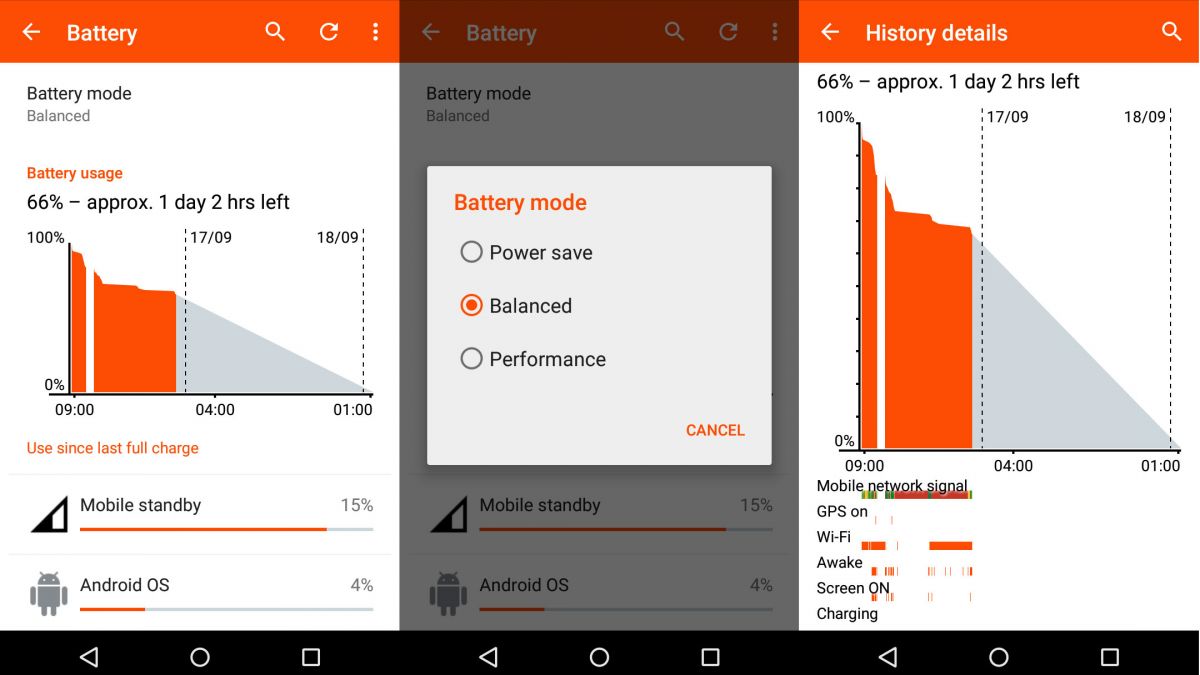
Cyanogen comes with battery management features built in. ‘Power-saving mode’ limits screen brightness and halts the flow of messages and texts, unless manually managed. ‘Performance mode’ is the opposite, sacrificing battery life for improved performance in gaming, among other activities.
While other performers such as the Moto G and Moto X Play may have better battery life than the Wileyfox Swift, the Swift is significantly cheaper than both; again, for the price it offers excellent performance.
The essentials
I found that the Swift, being a 4G LTE-enabled device, offered impressive data speeds, and was consistently able to hold onto a connection in areas where other devices struggled, even in the countryside.
The GPS unit was something of a disappointment. In general use I found that it achieved a lock quickly, but in less built-up areas it began to struggle badly.

Call quality was a rather nice. Calls were a pleasure both to make and to receive, with callers remarking on the quality of the exchange.
The Wileyfox Swift, by default, uses the in-built Google Keyboard, an option that’s far better than the average stock Android-skinned offering. It supports gesture typing, and coupled with a strong vibration motor it’s a pleasure to use.
Somewhat unusually – perhaps it’s a design flaw – the notification light on the Swift is exceptionally bright, distractingly so at times; in a dark room it could easily be used as a makeshift torch.
Camera
2015 is the year of the 13MP camera, at least at the low end of the smartphone market. First it was the Moto G (2015), bringing the sensor from no less than the Nexus 6 into play. Now the Wileyfox Swift seeks to catch up, and with a dual-LED flash to boot.
The marketing blurb direct from Wileyfox talks about a multitude of different lenses and a stacked sensor, and name-checks Sony, a provider of winning smartphone snappers, but all this counts for nothing if the results don’t match expectations.

Happily, results from the Swift don’t disappoint. Predictably, dynamic range isn’t the best, with the camera having a tendency to blow-out the highlights in many images, something the lack of easily accessible manual controls only exacerbates.
Colours are well produced, though, being nicely saturated without taking on a cartoonish quality, and don’t appear overly cool. Detail is well resolved too, with the centre of most images having decent sharpness; there’s the expected softening towards the edges of the frame.
In low light, performance is also above par. The dual-LED flash doesn’t quite make up for the lack of a proper Xenon unit, and yet it still manages acceptably, with most images well exposed. As for video and selfie image quality, the former is not great, while the latter is acceptable.

Though not quite matching the lofty goals set by the marketing team at Wileyfox, the Swift’s camera still manages to satisfy in most regards, even if it doesn’t manage to reach the heights of the Nokia Lumia 1020, LG G4 or the Panasonic CM-1.
The camera UI itself can be a little confusing. At the bottom sits the camera switch, a flash toggle, a circular tool toggle and access to the extensive settings menu. Though the layout is mostly intuitive, quick access to important settings can be difficult to come by, and overall the experience is not especially quick.
Camera samples

Click here for the full resolution image

Click here for the full resolution image

Click here for the full resolution image

Click here for the full resolution image

Click here for the full resolution image
The competition
Want to know what else is out there on the market before you buy a Wileyfox Swift? Here are the phones we think you should take a look at before you put your money down.
Moto E

Motorola is the master of the cheap smartphone with high spec and the cheapest in the range from the big M is the Moto E. Last year’s version is the best yet and it’s still worth looking at it if you’re after a cheaper phone.
For a little less than the Wileyfox Swift – at £99 – you’ll get a solidly designed smartphone that while not the thinnest on the market still looks good in the hand and, perhaps more importantly, features a 4G connection.
The display isn’t as good as the Swift though, so if that’s a deal breaker we’d recommend checking out the rest of the choices below before you make a decision. If you don’t mind about the display, you’re saving a little bit more if you go for the Motorola option here.
Wileyfox Storm
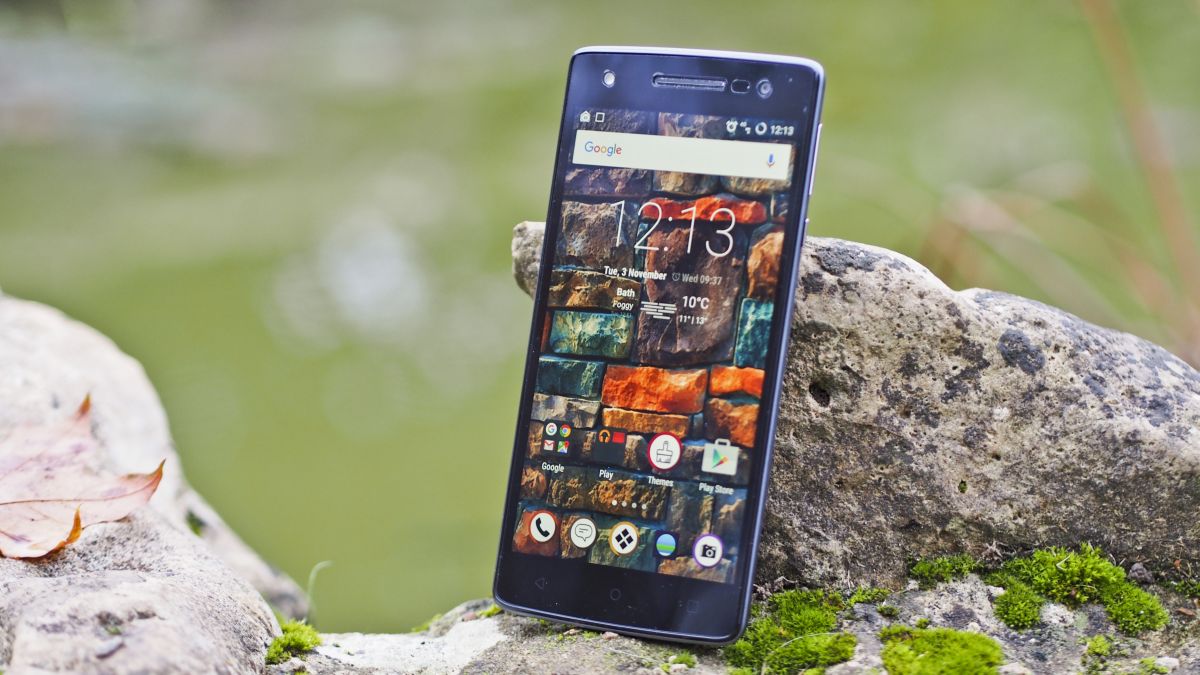
It’s not only about the Swift – there’s also the Wileyfox Storm, which is the Swift’s slightly more expensive older sibling. The Storm features a slightly larger 5.5-inch display compared to the 5-inch one on the Storm.
Both are Full HD options though, so you can’t really go wrong here unless you specifically need a larger phone. The camera and processing tech is better in the Wileyfox Storm, but it’s up to you whether you think it’s worth spending extra money on it.
Both of these phones are fantastic for the price though. The Storm is that little bit extra at £199 but either way, you can’t really go wrong.
Vodafone Smart Speed 6

Now here’s another choice that’s an exclusive to the UK, but the USP is it’s even cheaper than the Wileyfox Swift.
This doesn’t have such a premium looking design as the Swift, but it’s certainly not an ugly looking phone. It runs stock Android software as well, something you’re not going to get on the Cyanogen-toting Wileyfox range.
The best bit is the price of the Vodafone Smart Speed 6, which comes in at only £49. That’s under fifty quid for a great 4G smartphone that can keep up with the Wileyfox Swift. It’s a hard decision to make.
OnePlus X
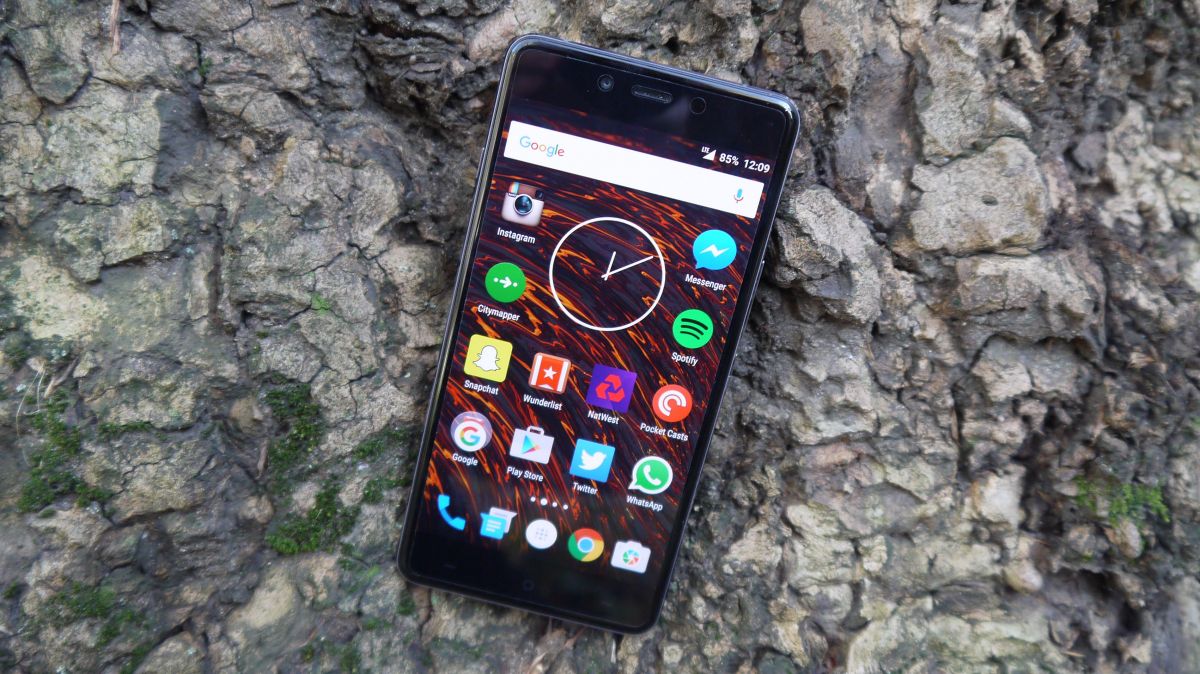
And finally, we have some competition from China in the form of the OnePlus X. The company started off making flagship phones at low end prices with the OnePlus One and OnePlus 2, but the OnePlus X is the company going hard at the budget end of the market.
The OnePlus X is still a great phone, but it’ll cost you a little more than the Wileyfox Swift. This is £199, but now you’re able to buy it without an invite so it’s simple to just go online and buy one from the OnePlus store.
The design is the big difference here so it’s mostly down to personal preference on the Wileyfox Swift’s slightly textured back or the glass choice of the OnePlus X. Both phones still look great though, especially considering the low price.
Verdict
Using the Wileyfox Swift I felt a little like I was getting a glimpse of the future. With a new OS, and a refreshing take on offering value for money in the budget space, the device is something of a breath of fresh air.
We liked
The camera on the Swift outperformed my expectations. Having seen several budget cameras that delivered nearly unusable images in most situations, this one performs nicely in most scenarios, delivering images I was happy to share.
With a removable and reasonably long-lasting battery, good speakers and a nice screen, the Wileyfox Swift is a great handset for consuming media on.
Performance is also a strong point. Navigating around the OS was very similar to using stock Android – uncluttered and quick. Although graphics-intensive games took a little longer to load, they nonetheless ran quite smoothly.
We disliked
Though using Cyanogen OS was a very pleasant experience overall, the question of support still hangs in the air, which is an important consideration given the extent to which the company was willing to distance itself from OnePlus, a move that left many users in the dust.
While Cyanogen OS can be easy to use, the vast range of configurable settings on offer could be confusing to the average user. I’m pretty tech-savvy, but even I found that I activated features on a regular basis that significantly detracted from my experience with the phone.
Final verdict
The budget smartphone competition is really beginning to heat up, and with myriad players having thrown their hats into the ring, some with considerable budgets behind them, it’s more difficult than ever to make a mark.
Wileyfox, however, has done just that with the Swift. It boasts the specifications of a phone much more expensive, with few sacrifices in either the feel of the device or the quality of the software experience. The back may be plastic, but it’s a pleasant polycarbonate; the device may run a Snapdragon 410, but the software is well optimised for the hardware.
It has a great screen, very decent speakers, good battery life and an okay camera. If you’re in the market for a budget Android device, you could do far worse.
Source: techradar.com










































"The Wileyfox Swift comes with a 2500mAh battery that is user-replaceable"
Not unless you want to pay £129 for each extra battery.
Just asked wileyfox and they dont sell spares.
This is effectivly all the disadvantages off a removable battery without the main advantage.
Just ordered mine, £20 cash back from Wileyfox if you order at the moment. great deal.
Definitely going to buy straight from Wileyfox.
Nice, I get a good feel from this company, Maybe its the brand that got me, I don't know. Good to see the early review is mostly good so far, definitely going to buy either this or the Storm when it becomes available through my local Orange store.
Talking about the Storm, will you be doing a hands on review of it too?